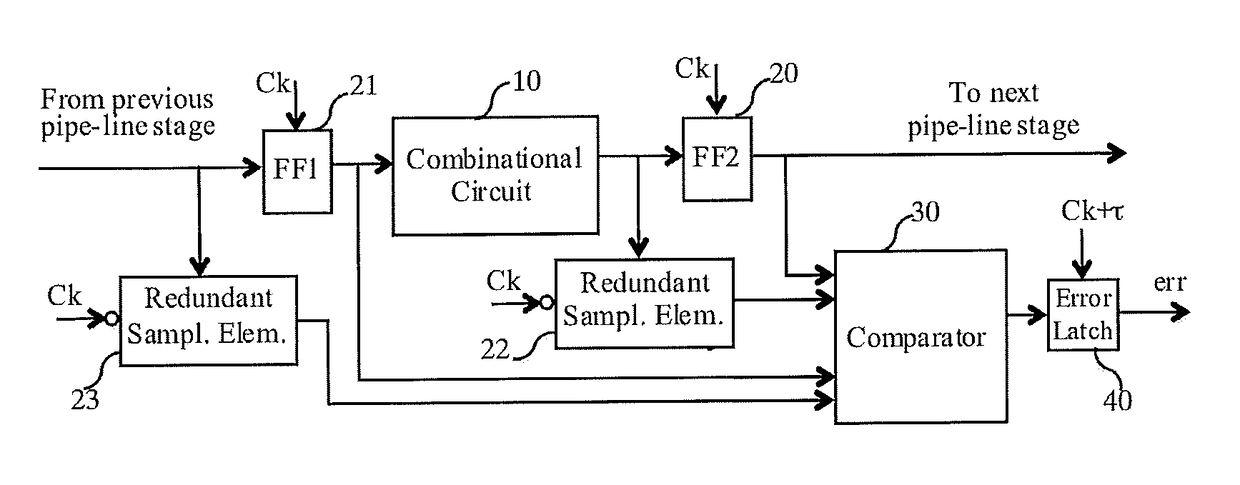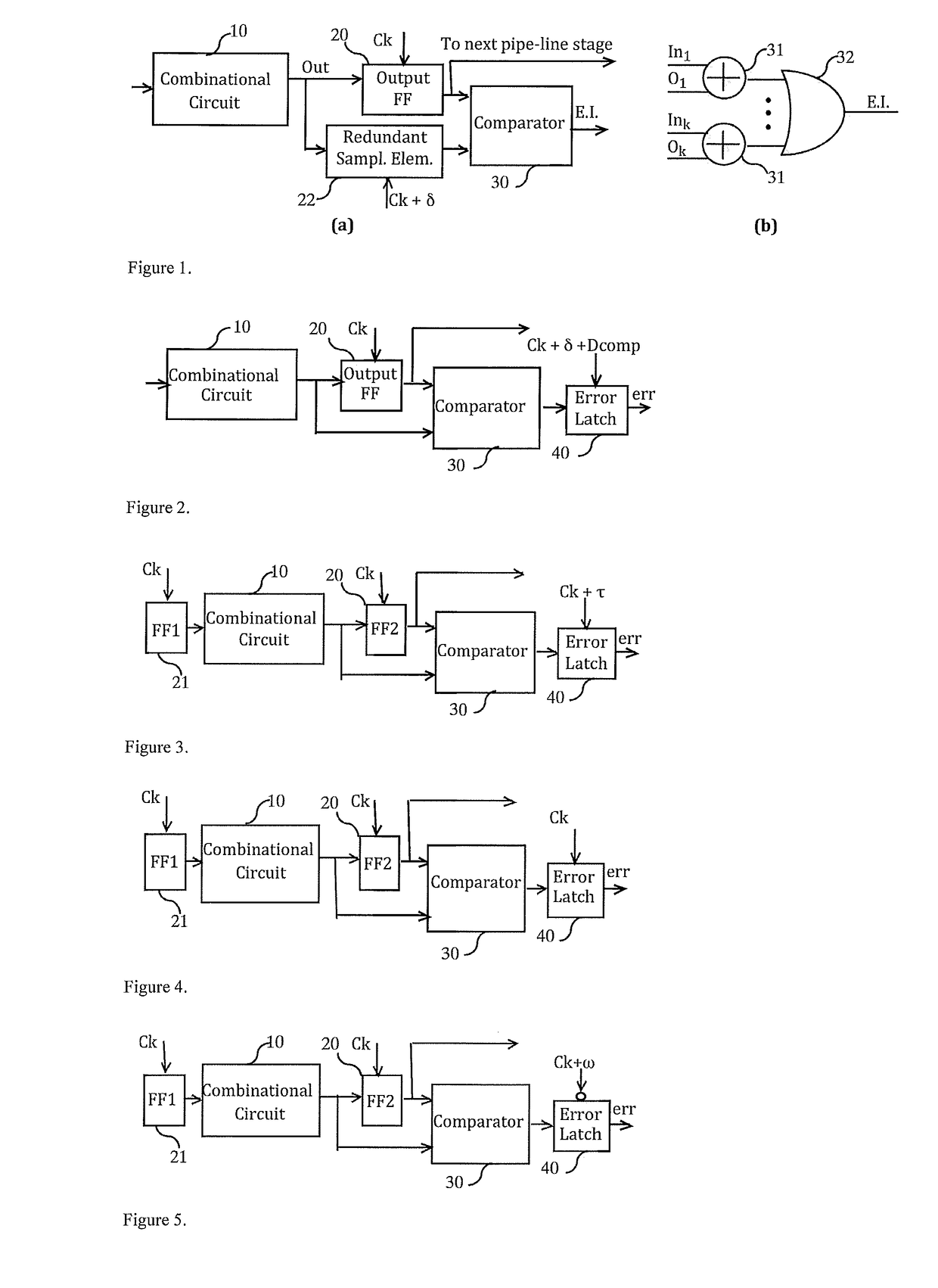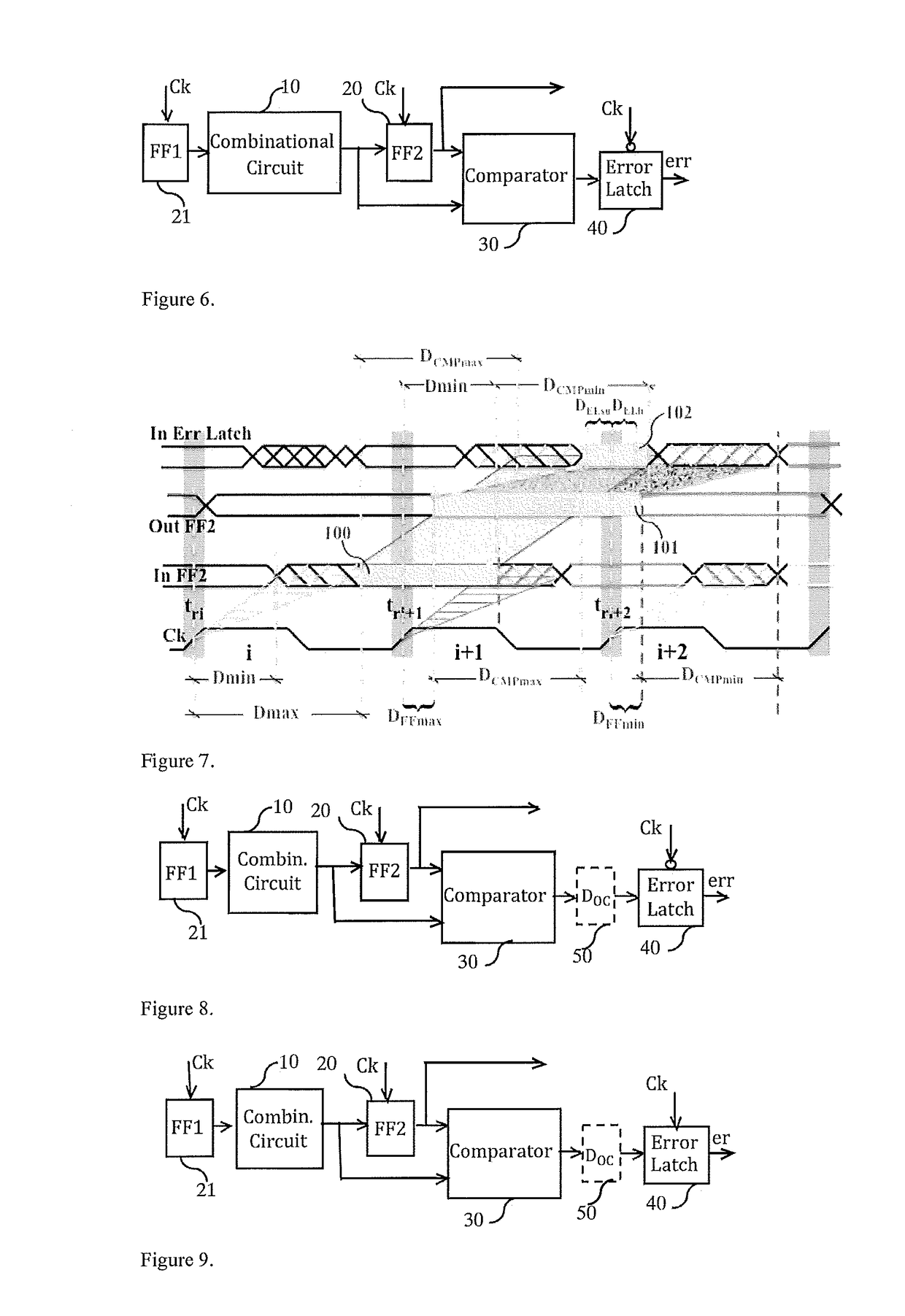Highly efficient double-sampling architectures
a double-sampling, high-efficiency technology, applied in the direction of measurement devices, instruments, measurement devices, etc., can solve the problems of inacceptability, area and power costs, and inability to meet the requirements of measurement, so as to achieve cost reduction and design
- Summary
- Abstract
- Description
- Claims
- Application Information
AI Technical Summary
Benefits of technology
Problems solved by technology
Method used
Image
Examples
Embodiment Construction
[0047]The goal of the present invention is to propose implementations minimizing the cost of the double-sampling scheme of FIG. 2; derive the conditions guarantying its flawless operation; provide a methodology allowing enforcing these conditions by means of manual implementation or for developing dedicated automation tools; implement these constraints conjointly for the combinational circuit and the comparator in a manner that reduces cost and increases speed; propose fast comparator designs by exploiting the specificities of the error detection circuitry; enhance double-sampling to mitigate single-event upsets without increasing cost. In the following, we first present a systematic theory, which is a fundamental support for describing these enhancements. Certain parts of this analysis and some of the related improvements are based on our previous publication [22].
Elimination of Redundant Sampling Elements and Related Timing Constraints
[0048]In the double sampling scheme of FIG. 3,...
PUM
 Login to View More
Login to View More Abstract
Description
Claims
Application Information
 Login to View More
Login to View More - R&D
- Intellectual Property
- Life Sciences
- Materials
- Tech Scout
- Unparalleled Data Quality
- Higher Quality Content
- 60% Fewer Hallucinations
Browse by: Latest US Patents, China's latest patents, Technical Efficacy Thesaurus, Application Domain, Technology Topic, Popular Technical Reports.
© 2025 PatSnap. All rights reserved.Legal|Privacy policy|Modern Slavery Act Transparency Statement|Sitemap|About US| Contact US: help@patsnap.com



